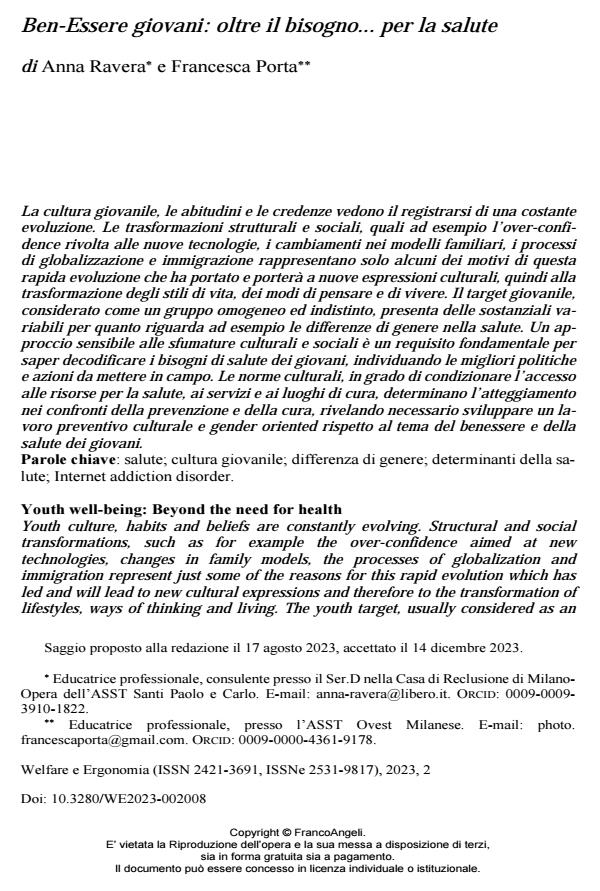Youth well-being: Beyond the need for health
Journal title WELFARE E ERGONOMIA
Author/s Anna Ravera, Francesca Porta
Publishing Year 2024 Issue 2023/2
Language Italian Pages 15 P. 103-117 File size 363 KB
DOI 10.3280/WE2023-002008
DOI is like a bar code for intellectual property: to have more infomation
click here
Below, you can see the article first page
If you want to buy this article in PDF format, you can do it, following the instructions to buy download credits

FrancoAngeli is member of Publishers International Linking Association, Inc (PILA), a not-for-profit association which run the CrossRef service enabling links to and from online scholarly content.
Youth culture, habits and beliefs are constantly evolving. Structural and social transformations, such as for example the over-confidence aimed at new technologies, changes in family models, the processes of globalization and immigration represent just some of the reasons for this rapid evolution which has led and will lead to new cultural expressions and therefore to the transformation of lifestyles, ways of thinking and living. The youth target, usually considered as an homogeneous and indistinct group, presents substantial variables regarding, for example, gender differences in health. A sensitive approach to cultural and social nuances is a fundamental requirement for knowing how to decode the health needs of young people, identifying the best policies and actions to be implemented. Cultural norms, capable of influencing access to health resources, services, places of treatment, determine the attitude towards prevention and treatment, proving that is very much necessary to develop cultural and gender-oriented preventive work with respect to the topic the well-being and health of young people.
Keywords: health; Youth culture; gender differences; health determinants; Internet addiction disorder
Anna Ravera, Francesca Porta, Ben-Essere giovani: oltre il bisogno.. per la salute in "WELFARE E ERGONOMIA" 2/2023, pp 103-117, DOI: 10.3280/WE2023-002008